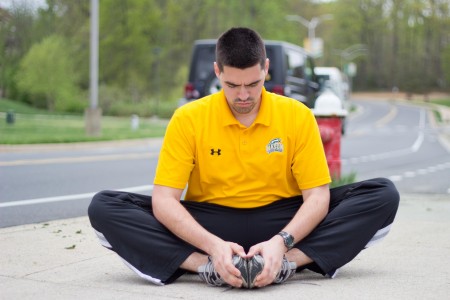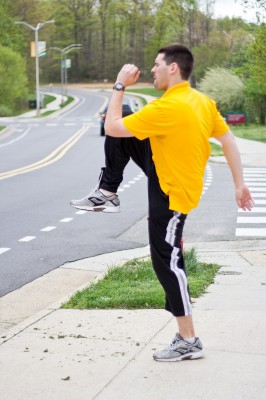Stretching: Static vs Dynamic
Flexibility training is an important aspect of any exercise regime.
Achieving your optimum level of flexibility increases your body’s resistance to muscular injury by allowing your joints to move through their full range of motion.
Flexibility training targets two different tissue adaptations: elasticity and plasticity.
Elasticity refers to the muscle’s ability to return to original resting length after a stretch.
Plasticity refers to the muscle’s tendency to assume a new and greater length after a stretch, even after the force is removed.
The primary goal of stretching is to produce a plastic deformation over time, which causes a permanent increase in our range of motion.
To achieve this goal, emphasize stretching to the point of minor discomfort, hold the stretch for at least 15 to 30 seconds and stretch after you have sufficiently warmed up the muscles.
There are many factors that influence flexibility, including joint structure, age, core temperature and activity levels.
While not all of these factors are controllable, we can implement different practices to increase our flexibility.
Traditionally, static stretches are completed during warm-ups for the majority of stretching: holding positions such as a standing quadriceps stretch, a hurdler stretch or a basic sit and reach.

The butterfly stretch stretches your groin. Sit on the ground and, instead of cross- ing your legs, place the bottoms of your feet together and move them inwards towards your body. Remember to keep your knees down to get the most out of the stretch. (JENNY KRASHIN/BROADSIDE)
Another option is to use active mobility exercises to help warm up the muscles dynamically and take the joints through their full range of motion.
That is not to say that static stretches do not have their place in routines. It is good practice to use static stretches after the cool down of your workout.
Dynamic stretches use controlled movements to improve range of motion, loosen muscles, increase heart rate, increase body temperature and increase blood flow to help you exercise efficiently.
Dynamic stretching is most effective when it is activity-specific.
The best time to perform dynamic stretches is during a warm-up routine.
Several examples of dynamic stretches include walking lunges, straight leg kicks, high knee walks and arm swings.

High knee walks stretch your hamstrings and quads. Bring your knee straight up and close to your body. Your foot should not kick back to your butt, but have your heel raised straight under it. (JENNY KRASHIN/BROADSIDE)
Once your workout is complete, it is a good idea to perform a cool down, and then perform those static stretches.
Remember to hold the stretch until you feel a light pull on the muscle. While holding the stretch, be sure to relax.
If you are unable to relax, that is a good sign that you may need to lighten the stretch just a little.
As you feel less tension, you can increase the stretch again until you feel the same light pull.
Hold this position, and then relax. You should be able to notice a difference after three to four weeks.






Comments